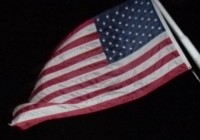Atlanta Georgia
Atlanta is famous for having the busiest airport in the world, having snatched that title from Chicago. But we were driving through (thru) and so had no need of it. We arrived in leafy Atlanta just as Hurricane Irma breathed its last gasps and a lot of places were closed.
Not far away from out hotel was a junction known as Little Five Ways. This features in the Lonely Planet Guide as a point of interest. We walked there twice as it had some 'alternative' shops of interest to Wendy. We discovered that it's also the place to buy 'medical' marijuana; have your fortune read; get a 'tat' or two; or to pick up some healing crystals. It's also a good place to hang out if you're homeless. Needless to say the local residents in an otherwise comfortable middle class area are anything but pleased by this hippy apparition or homeless people in their midst. Signs saying: "Poor planning ruins neighbourhoods" abound in their nice suburban gardens, that were still being cleaned of leaves and branches after hurricane Irma.
Downtown Atlanta challenges Chicago in other ways. Since the 1970's it's undergone a building boom, with a predominance of post-modern high-rise towers, some quite ugly, outnumbering the modernist ones. Like several other places we travelled through, Atlanta is still recovering from the Global Financial Crisis, with a handful of cranes now appearing, but there are some very poor people in town.
Mid-town Atlanta - Click on this picture to see more
This had been made more apparent when we visited the Martin Luther King Jr Memorial in a black part of town and walked a few blocks up to the city past shabby buildings and homeless or at least unemployed people hanging out in the street, less threatening than sad.
Martin Luther King, Jr. Memorial - Click on this picture to see more
Our historic hotel, more like a guest house, was more prosperously located, walking distance to the Carter Centre and Presidential Library/Museum (President Jimmy Carter). This turned out to be well worth a visit as it reprised much of the Southern US history from the second world war up to the 1980's.
Carter's admired father was a successful businessman and like most of his fellow leaders a strict segregationist. But the son understood the times were a'changin and championed integration. His campaign, through local politics to the White House, represented him as a simple peanut farmer living the American Dream. Yet he had some of the smartest strategists to get him there and it's said that others after him learned a lot from his success. He faced a number of challenges including 'stag-flation' and the energy crisis. He then suffered a debilitating challenge from Ted Kennedy, brother of assassinated President John F Kennedy, for the Democratic nomination, together with a damaging hostage crisis in Iran. Big money easily ousted him, after just one term, in favour of Republican film star Ronald Regan.
Carter Centre and Presidential Library/Museum - Click on this picture to see more
We both came away from the museum full of admiration for a man who has achieved so much in his life and who still comes across as wise and resourceful.
A little further afield is the 'Gone with the Wind' Museum. This is in a now disused railway station. I was not expecting much - I've tried to watch the movie several times and only made it to the end thanks to the 'fast forward' button. And I've sat through Waiting for Godot - twice! Anyway it was on Wendy's 'must see list'. And I was wrong. It was very interesting. To put the story in context there is a lot of interesting material about both the Battle of Atlanta and the decisive Battle of Jonesboro. Even the background biographies of the unconventional author Margaret Mitchell, and of the movie's 'fem fatal', a brothel madam played by Ona Munson, were an interesting commentary on the times.
But the best historical museum in Atlanta is out in the suburbs, surrounded by the mansions of the better off. You need a car or Uber to visit. The Atlanta History Centre features a stately home and a number of less grand historic dwellings set in extensive grounds. These include farm cottages and a slave house that's shockingly more basic than the contemporary and beautiful Victorian children's playhouses.
The museum building presents a comprehensive, year by year, history of the Civil War, considered from both sides, and it's devastating aftermath in the South. There is also material related to the two world wars and some 1950's interiors. We can recommend it.
Atlanta History Centre - Click on this picture to see more

